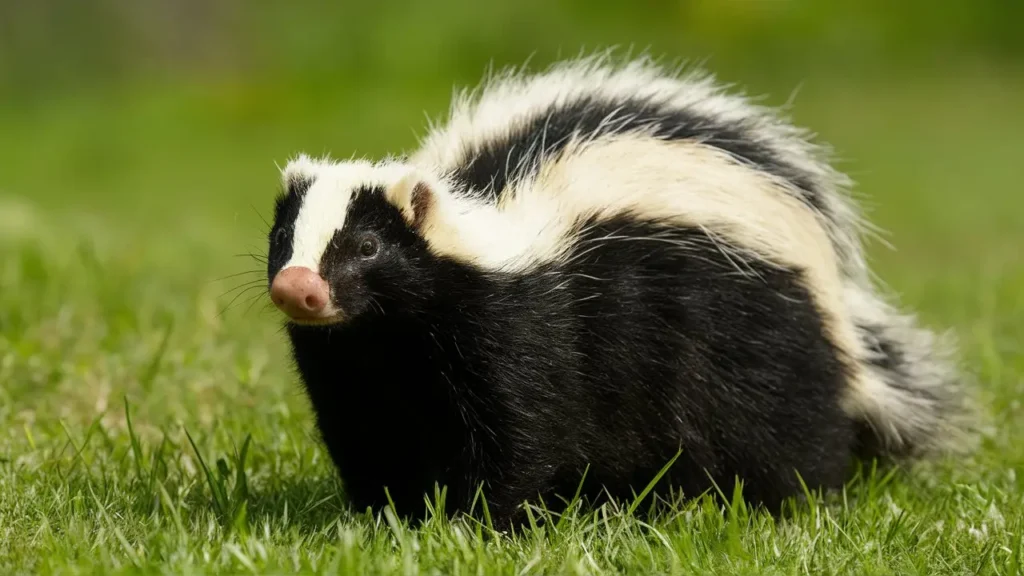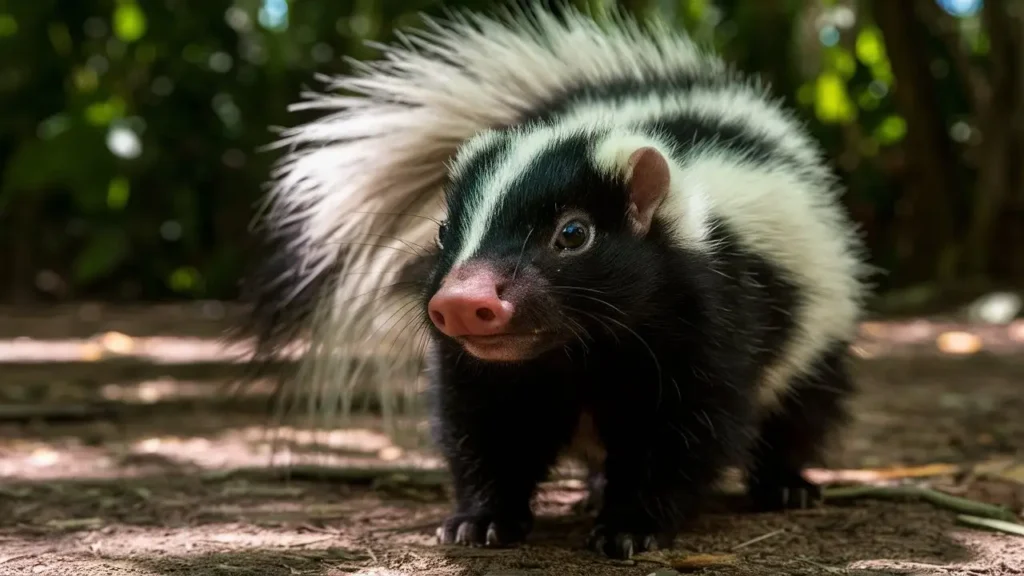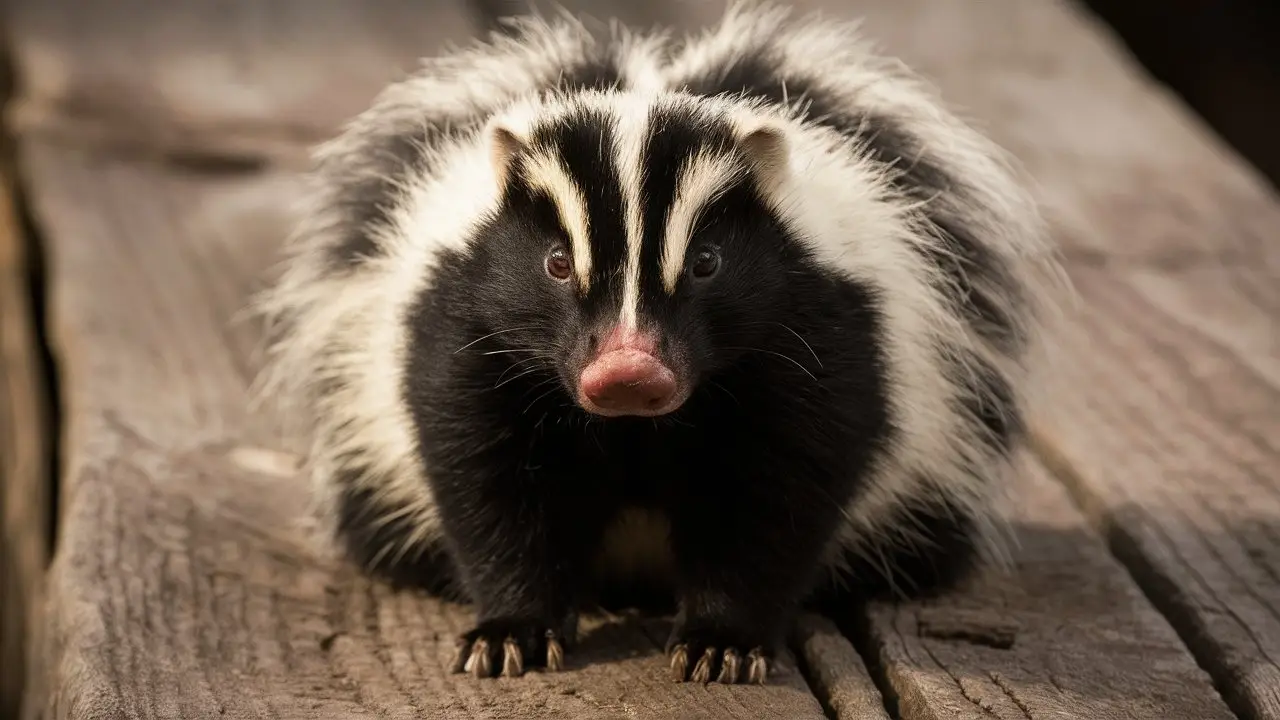Humboldt’s Hog-Nosed Skunk: A Nocturnal Marvel
The Humboldt’s hog-nosed skunk is a unique member of the skunk family, renowned for its distinct long snout and fascinating nocturnal lifestyle. Found in South America, this skunk species stands out for its foraging habits, diet, and solitary behavior. In this article, we’ll explore the intriguing world of Humboldt’s hog-nosed skunks, their behaviors, ecological importance, and conservation efforts.
Distinct Features of the Humboldt’s Hog-Nosed Skunk
The Humboldt’s hog-nosed skunk boasts features that make it instantly recognizable among its skunk relatives.
Key Physical Characteristics
- Long Snout: Adapted for digging, this flexible snout helps the skunk root through soil in search of food.
- Bold Stripes: Its black-and-white fur pattern not only provides camouflage but also serves as a visual warning to predators.
- Sturdy Build: With strong legs and sharp claws, it’s well-equipped for digging and foraging.
Size and Appearance
- Length: 18–22 inches (excluding the tail).
- Weight: 4–6 pounds, making it a medium-sized skunk.
- Coat: A sleek black body adorned with striking white stripes that extend from its head to its tail.
These physical traits are tailored for survival, whether it’s evading predators or thriving in diverse habitats.

Social Behavior and Communication
Humboldt’s hog-nosed skunks are solitary by nature, with interactions limited to mating season or territorial disputes.
Social Dynamics
- Lone Wanderers: They prefer isolation, avoiding group living.
- Mating Season: Social interactions peak during courtship rituals, which involve scent marking and physical displays.
Communication Methods
These skunks rely on multiple forms of communication to interact or ward off threats:
- Scent Marking: They use a strong-smelling secretion to establish territory.
- Body Language: Stamping feet or raising tails signals aggression or warning.
- Vocalizations: Hisses and grunts are used to express distress or deter predators.
Reproduction and Lifespan
The Humboldt’s hog-nosed skunk follows a reproductive pattern typical of solitary mammals.
Mating and Offspring
- Mating Season: Occurs during late winter or early spring.
- Litters: Females give birth to 2–5 kits after a gestation period of about 60 days.
- Maternal Care: Kits are nurtured by their mother for 2–3 months, learning essential survival skills.
Lifespan
In Captivity: Up to 10 years, benefiting from consistent food and shelter.ies but also informs conservation efforts. Join us as we delve into the world of these unique creatures.
In the Wild: 2–3 years, limited by predators and environmental challenges.

Defense Mechanisms: Nature’s Odorous Shield
When threatened, Humboldt’s hog-nosed skunks rely on their infamous spray as a first line of defense.
The Skunk Spray
- Contains sulfur-based compounds called thiols, responsible for its strong odor.
- Can be accurately sprayed at predators from several feet away.
- Causes irritation and temporary blindness, deterring attacks.
Additional Defense Strategies
- Camouflage: Their black-and-white fur blends into the shadows of the night.
- Warning Displays: Stamping feet or raising tails signals readiness to spray.
- Burrowing: Quick digging skills allow them to escape underground.
Conservation Status: Protecting the Humboldt’s Hog-Nosed Skunk
While not currently endangered, this species faces several threats:
Challenges to Survival
- Habitat Loss: Urbanization and agriculture encroach on their natural habitats.
- Pesticides: Exposure to harmful chemicals reduces their food sources.
- Road Mortality: Many skunks fall victim to vehicle collisions.
Conservation Efforts
- Habitat Preservation: Protecting grasslands and forests where they thrive.
- Education Campaigns: Raising awareness about their ecological role.
- Research Programs: Monitoring populations and studying their behaviors.
Fun Facts About the Humboldt’s Hog-Nosed Skunk
Local Legends: In South American folklore, they are often symbols of cunning and resourcefulness.ation. Remember, preserving their habitats ensures these interesting facts continue to delight and educate us about the natural world.
Expert Pest Controllers: Their diet helps control insect populations, benefiting ecosystems and agriculture.
Handstand Warning: Like spotted skunks, they may perform handstands before spraying.
FAQs
What Do Humboldt’s Hog-Nosed Skunks Eat?
They primarily eat insects but also consume fruits, small animals, and plant matter.
Do Humboldt’s Hog-Nosed Skunks Spray?
Yes, they spray a strong-smelling liquid as a defense mechanism.
Where Do They Live?
These skunks inhabit South America, favoring grasslands, forests, and agricultural edges.
Conclusion
The Humboldt’s hog-nosed skunk is a remarkable creature, blending unique physical traits with vital ecological roles. From their nocturnal habits to their specialized diet and defense mechanisms, these skunks offer a glimpse into the incredible adaptability of wildlife. By understanding and protecting these animals, we contribute to preserving biodiversity and the delicate balance of nature.

